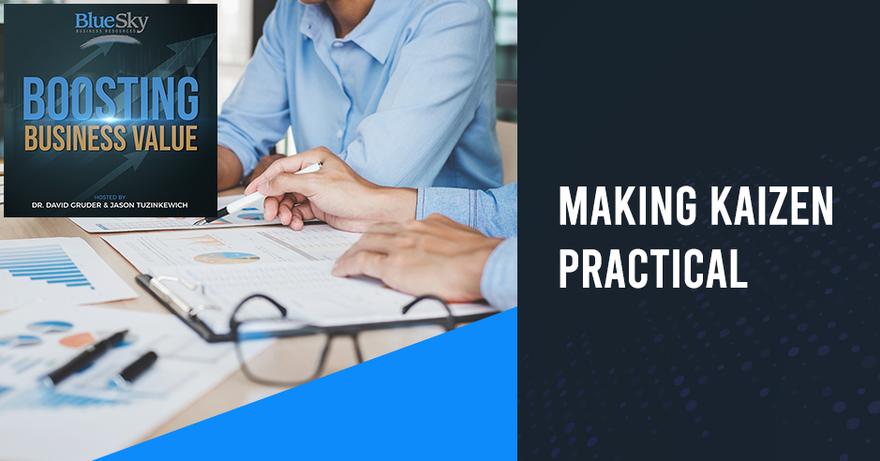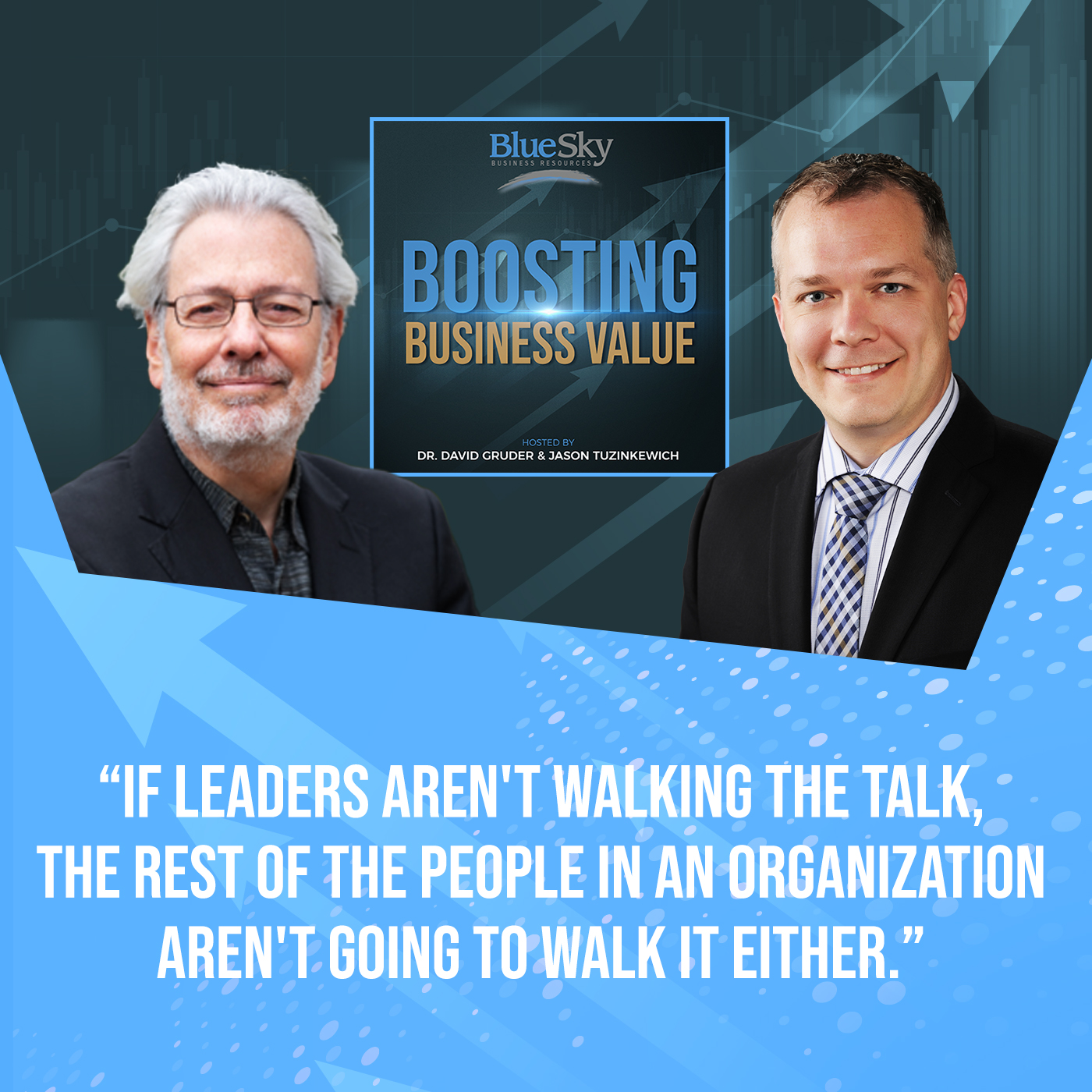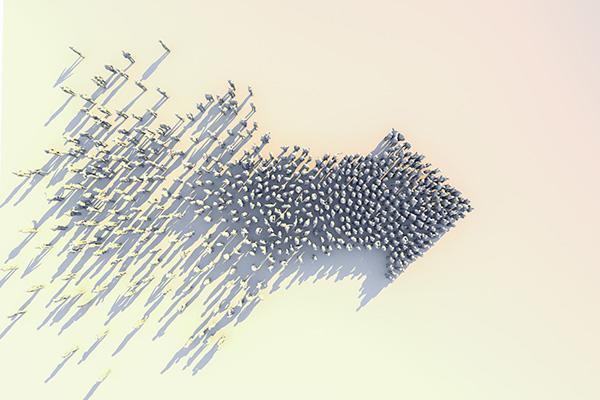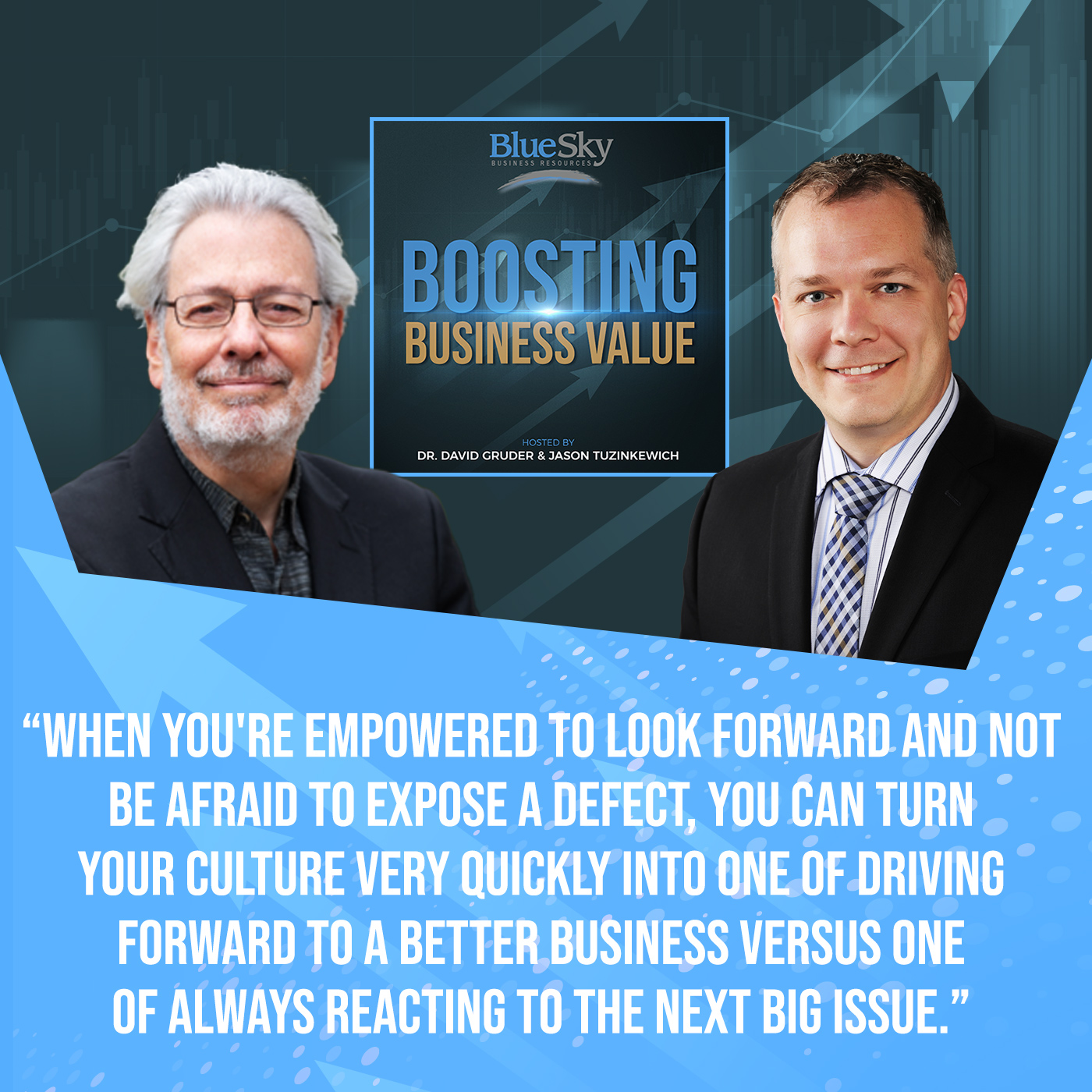Ep. 13 - Making Kaizen Practical

Kaizen is a Japanese word that means a virtuous change to prevent future repetitions of current challenges. By embracing this mindset, organizations can proactively anticipate upcoming issues to resolve them before they worsen. In this episode, we unpack what Kaizen is, why it matters to business success, and the difference between Situational and Cultural Kaizen. We also unpack the five essential ingredients in creating a Kaizen Culture using a unique analogy of board games and illuminate its profound impacts on boosting your business's collaboration, problem-solving, profitability, and value.
---
Watch the episode here
Listen to the podcast here
Making Kaizen Practical
A Powerful Way To Enact The Changes You Want To See
In this episode, we are going to unpack what Kaizen is and its profound impacts on boosting your business culture, profitability, and value. We'll also show you how to shift Kaizen from an embraced value into effective implementation. With me is the ever-amazing co-host of this show, Jason Tuzinkewich, who is Blue Sky's Chief Operations Officer and all-around wizard behind the curtain. Let's kick this off with you starting to talk about what Kaizen is.
Thank you for that beautiful introduction, doctor. It's always a treat to hear you say nice things.
They're true too.
I appreciate that. If we're going to talk about how to embrace and implement Kaizen into the daily operational culture of a business, it's important first to understand what it is and why it matters. A lot of people have heard this goofy Japanese word, but I don't know that many embrace what it means. The word means a virtuous change that prevents future repetitions of current challenges and proactively anticipates upcoming challenges to resolve them before they become problems.
It's built out of two Japanese words Kai, which means change, and Zen, which means virtue. The reason that's important is that the idea is not only about continuous improvement. It's not only about progressive change. It's about every member of a team having the virtuous requirement to drive positive change, to think about what could be better about what we're doing right now, and how I improve the lives of my community members within this organization by making an improvement.
That's a big clarification, that ownership piece, that commitment to the other members of the future team that gets lost in translation a lot of the time. For a little bit of history, Kaizen was first used in business after World War II when US business people went over to Japan to help rebuild. There was this East meets West cultural situation where Japan has an ideal of perfection and the US had a few concepts of quality and process optimization.
It all came together as what became known as the groundbreaking Toyota Way, which covered Lean. It created Six Sigma. Kaizen was part of all of that Toyota Way, and that's when it gained popularity. That's only a little bit of the history of how Kaizen came to be a part of business operations. Doctor, tell us a little bit more about how it's utilized nowadays.
One of the things that stands out to me about Kaizen is that it's a buzzword that's thrown around a fair amount. When I hear a buzzword, all I hear is good intentions. When people talk about Kaizen as a bud buzzword, it's the Japanese language equivalent of continuous improvement. It's easy for any company to say, “We believe in continuous improvement,” but that belief is true but not useful unless it's translated into very specific procedures.
Kaizen is more than just a good intention. It's an overarching way of functioning in business, way beyond fixing specific issues. In this episode, we're going to unpack the ingredients that convert Kaizen from a good intention into continual implementation in your businesses. Where we'll go next is into the three big challenges with Kaizen. Was there anything else you wanted to add first about what Kaizen is, Jason?
No. I think that sets the table. We've got the tablecloth down. Now, let's put the utensils on and dig into the meat of it because it becomes clearer. If you understand that this is based on virtue and a personal sense of ownership, then the rest of Kaizen becomes clear as you walk through what the challenges are and how you are successful in utilizing and implementing them. With that said, I'll kick it off with the first big challenge that we see, which is understanding the true nature of Kaizen and beating this drum hard, but this is something that's near and dear to my heart.
It's not just change for the sake of change. It's not frivolous problem-solving. This is a commitment to improving the lives of people and improving the quality of the organization by making thoughtful and prudent changes. It's a big thing, especially in the heart of this word. By practicing Kaizen, you are striving for virtue. That's so much bigger than just making changes.
Apply the Kaizen Culture not just for the sake of change. It is not just frivolous problem-solving. It is a commitment to improve people’s lives and the quality of the organization.
To piggyback on that, what we are going to zoom in on and deep dive into is what we call Cultural Kaizen in contrast to what we call Situational Kaizen. Situational Kaizen is what you were talking about, Jason, where a problem shows up and somebody has this idea of, “Let's turn this problem into an opportunity for improvement.” That's Situational Kaizen. However, when the mindset and the skillset of Kaizen are fully embedded in a business, it becomes a cultural way of being in a business. That's what we're calling Cultural Kaizen in contrast to Situational Kaizen.
I like that because it's two different perspectives. You're looking at your organization through the lens of either the culture, the people that make everything happen, and how their experience drives quality and productivity, or you're looking at it from the lens of a business and that's what is driving cash to the bottom line in a lot of cases.
We're looking at making that shift. As you start to think about this in a more cultural and less operational sense, you start to realize some big differences. I think about it and was hit face-on with the difference between how the American work ethic and the American work paradigm from a cultural paradigm when I moved to the Netherlands. I always had my business colleagues out there saying, “Jason, we are not animals,” but as my formal indoctrination in US business, my mindset was always to plow through a problem.
You may have to control symptoms. You may have to put a Band-Aid on, but you just push through and you get to the other side because it's the other side that matters. Doctor, talk to us a little bit more about when you take away, especially the indoctrinated US work ethic, and start thinking about the cultural ethic, tell us how that changes things.
It does change things quite profoundly. When we are in reactivity mode, when we're in, “Put out the fire after the fire has broken out,” mode, that's crisis mode. Yes, there are crises that emerge from time to time in a business, but both Jason and I have seen businesses that function in perpetual crisis mode where nothing gets addressed until after the fire has broken out.
Management by crisis is not a sustainable management strategy. It's necessary on occasion, but it should not be the modus operandi. It should not be the way that the company operates in a day-in, day-out way. There's a saying in a number of indigenous cultures, including many of the first nation people in the United States and Canada, that has to do with decision-making from the framework or the viewpoint of identifying the impacts of a decision on the next seven generations that follow.
That approach and that mindset that is very proactive have, as its foundation, looking toward being responsible to the next people, the next generations, or the next iteration of the company who will encounter the current challenge over and over again in the future unless we do something different to elevate our best practices now and into the future so that the chances of a repetition of our problem are not only kept to a minimum in the future but if the problem recurs in the future anyway, that the problem will be recognized sooner and be intervened with more effectively and rapidly than if we didn't take this proactive kind of approach to addressing current issues.
This proactive responsibility approach is the essence of the virtue aspect of Kaizen. Proactive responsibility changes the dynamic in business culture from people being afraid to expose a problem that has arisen or that could arise until after it's exploded into a three-alarm blaze. Also, changing the dynamic from being blamed for a problem or blaming if a solution that's proposed doesn't work into an atmosphere of, “If I don't do what's virtuous and right, I'm letting down the team and I'm being negligent about the company's future.”
There's such a dynamic of shared trust when you start to take responsibility for this. I've been racking my brain since we decided to talk about this to come up with a better anecdote to talk about this change of mindset than the one I'm going to use, and I just couldn't. I'm going to go back to Toyota. I think about and I wish that I could have been in the day that Toyota was taking over the auto industry.
The US automakers were starting to struggle. Ford and Chevrolet sent a cohort of engineers to go and observe the Toyota manufacturing line. When they got there, they had their clipboards. They were taking notes and they saw some things that they're like, “That's nice. This is good. I can see how that's more efficient.” About halfway through their tour, one of the line workers pulled the chain and stopped the entire production line. He stopped it cold, and the team got together and talked about the problem that he saw and fixed it before the line started.
This was revolutionary for these American engineers who started the automotive business. Could you imagine being one of those people that sees a frontline worker stop all production and say, “There's a problem. We need to fix it.” I think that we're getting a little bit more comfortable with that in the US. We still haven't embraced it as a society in business, but we're getting a little bit more comfortable with it. That's the change that we're talking about making, a frontline worker not only feels empowered but feels responsible to stop all products so that a problem can be fixed before defective parts are sent out. With that said, let's start to talk about how you can get there.
Before we do, I want to add one PS to what you were saying because what you are describing is the essence of bottom-up change. There's a lot of emphasis on top-down change for good reasons because there's a lot of change that has to come from the top down. It’s because if leaders aren't walking the talk, then the rest of the people in an organization aren't going to walk it either. However, this is about the other half of the full equation of change. The top-down is one half, bottom-up is the other half. I can't think of a better example of bottom-up change than what you described as well in terms of Kaizen. It's a perfect example, Jason.

I get excited every time I think about an organizational culture that has this trust, this empowerment, and this personal sense of pride and ownership in the outcome. That's what we're looking to help you all to achieve. Let's talk about some of these solutions. The first thing that I think is important to talk about when we are thinking about how we implement Kaizen into our organization is to recognize that there are five facets of a Kaizen culture.
Most of the American companies that I have worked with and seen use one. The five facets are growth in the sense of community and interconnected responsibility. They're called point, system, line, plane, and cube but that's only an expansion of that responsibility, that network, and the organizational mindset. Point Kaizen is the most basic. It's the one that I see American business owners when they are using Kaizen implementing.
When somebody sees a problem, they take the responsibility to address it and solve it. This is the employee on the line stopping production to say, “If we keep the line running, there will be defective units going out.” That's Point Kaizen, and that's a really important run. It's the key to bottom-up change and is also the heart and soul of personal ownership and empowerment to grow this whole Kaizen culture.
Point Kaizen is a crucial building block in impact literacy, in helping people become far more able to assess the impacts of choices than most people are trained in the educational system to be able to do. Point Kaizen leads into facet number two, which is System Kaizen. System Kaizen is looking into a forward future timeframe. It’s thinking about seven generations ahead. I'm meaning that metaphorically, not literally seven generations.
It's thinking about the future impacts of current issues or neglecting current issues. System Kaizen is looking forward in time to spot future problems before they erupt proactively. Based on an understanding of what problems could emerge and planning how to prevent them from emerging to the extent that prevention is possible. Also, installing a proactive superior solution to be utilized if those problems do emerge despite best efforts to prevent them from emerging in the first place. That's the essence of System Kaizen.

You’ll see these first two facets are at the individual level. Essentially, Point Kaizen is learning how to play Kaizen checkers and System Kaizen as Kaizen chess. We then go into facet three, which has started to expand beyond the individual. It's called Line Kaizen. It's changing how you communicate vertically and horizontally with the people you are in direct contact with so that you get more people involved in the process.
It's the idea of saying, “I see a problem and you are an expert in something that is tangential to this problem. How should we go about this resolving it together?” Once the individual is empowered, has confidence, has ownership, and is looking forward to the organization, then you go to Line Kaizen. You start communicating those Kaizen thought processes and engaging more of your direct network, your immediate range of communication to get them involved in the Kaizen game.
To expand your metaphor of checkers and chess, if Point Kaizen is individual checkers and System Kaizen is individual chess, Line Kaizen is cultural or systemic checkers. Plain Kaizen, facet four of Kaizen, is system chess where several lines are brought together into organizational families, which are clusters of stakeholders, all of whom bring a different perspective to shared challenges.
All of whom provide a different lens for understanding those challenges and for a different lens in terms of articulating their high intentions and their deep concerns related to those challenges so that a truly holistic, integrative systemic approach to dealing with these kinds of challenges as an integrated family or clusters of stakeholders gets to occur. This is a powerful sign. When a business is really solid in Plain Kaizen, they're in an elevated state of cultural well-being, cultural collaboration, cultural efficiency, productivity, and cultural sustainable well-being.
In some of the outward indications of success in Plain Kaizen, you'll see more across a unit or disciplinary teams forming ad hoc. You'll see a lot more communication with the different departments and you'll see a dissolution of the silo that tends to occur as an organization grows. You want to not only have an idea of what Kaizen looks like as it grows but also what the organization looks like as you're successful with these things.
Rounding out to full geek mode, facet five is called Cube Kaizen, and that's going to be three-dimensional chess. This is where the concept of Kaizen expands beyond the borders of the organization itself. This is where you see suppliers and consumers getting involved in the conversation and sharing their experiences and struggles so that the organization can cross the border and provide benefits from well to wheel.
It's the hardest to pull off, but it's the most impactful thing that you can have because now there is a culture around your brand. There are loyal customers. You have transparency in the supply chain that the average business won't have. You have the ability to be proactive in an entire community, especially as ESG becomes one of those buzz acronyms that people are very concerned about and people are thinking more about the triple bottom line. You can only achieve true stewardship as a business owner and as an organization if you have a community that goes beyond the borders of your organization.
You can only achieve true stewardship as a business owner if you have a community that goes beyond the borders of your organization.
That's what I was thinking as well. Cube Kaizen is 3D chess. For those of you who are Star Trek fans, you've seen 3D chess played by certain Star Trek characters in certain episodes of the original series and the next generation. As you're seeing and having unpacked these five facets of Culture Kaizen, you're recognizing now that Kaizen is a way of being. It's a way of life in a business. It's not simply, “Do Kaizen in this situation and then forget about Kaizen until the next situation.”
No. It's an ongoing mindset. Kaizen has a wonderful connection as a worldview and a mindset with another Japanese concept called Wabi-sabi. It is also a mindset and a worldview. Wabi-sabi is finding the gift, the gold, the virtue, and the usefulness, an undesired situation that has risen. The symbol of Wabi-sabi in Japanese culture is a piece of ceramic, often a bowl or a mug where there's a crack in the ceramic and where the crack has been filled in with gold.
That is a perfect symbol of the Wabi-sabi mindset. When you're in a Wabi-sabi mindset, you are not wigged out by undesired situations that come up. You're not wigged out by imperfections. You don't go into shaming, blaming, guilt, and all of that nonsense. You instead go, “This was not what I had planned on. In my idealized version of how the business operates, this is not how I would've envisioned things unfolding. It doesn't seem to be desired. I'm not going to dwell on the undesired. I'm going to dwell on how to fill the crack in with gold.”
It's how to turn the undesired situation into a blessing that we might not wish on ourselves to have recurred in the future, but where we have harvested such value from the undesired that we're grateful for what has come from the undesired. That's the Wabi-sabi mindset. When you combine the Kaizen mindset and strategies with a Wabi-sabi worldview, you've got a formula for a high collaboration, happiness, and high productivity company culture. With all of that heavy seriousness, I'm going to look to you to lighten it up with your great joke.
What's funny is I was just thinking. For anybody that's read this show, this is exactly the time where I would make some kind of corny joke about loving wasabi, but this is too serious for that. This deserves a level of brevity that I'm not used to, but we're talking about an important concept. What comes to me more than the humor that I like to try to inject is this idea that when you have Wabi-sabi, which is you make the gold in the crack and you have Kaizen, you realize that the difficulty, the challenge, the obstacle that you're facing is an opportunity to grow your own virtue.
That's a really beautiful thing. In the American language, we have a lot of nice clichés like, “If you're not hurting, you're not growing,” and all of those things, which they're all true, but the reality is every single challenge is an opportunity to bring out your character, whatever it is. The hardest instance you face will bring out the truest iteration of your character.
If you are building your character on a mindset of going through this struggle and finding a resolution that will benefit future generations or you go into it with the mindset of, “Why is this happening to me, and how quickly can I get out of it?” one of those mindsets truly does set you up for virtue. That's a beautiful thing. That's why I've been a huge proponent and very passionate about Kaizen for many years, but I love that we have this opportunity in this show to explore why it's so important. That's great.
I'm going to piggyback on that because one of the things that I think is very precious about Kaizen is that it goes beyond the old cliché of, “If you're not hurting, you're not growing.” Kaizen does handle when people are hurting or when a situation arises that's undesired. What Kaizen is at its height, at its pinnacle, is happily learning rather than miserable learning. It's about preventing what's preventable and about having an optimal response plan locked and loaded if something that is a foreseeable complication does arise so that you don't have to be hurting to grow.

The old cliché of most people changes not because they see the light but because they feel the heat is true and is not simply true. It's incomplete to settle for only growing when we're hurting. It leaves too much gold on the table that's unutilized. Becoming proactive is about becoming a happy learner so you don't have to always be bludgeoned into surrender where you are building things from a place of well-being and happiness that mitigate avoidable problems.
I like that very much, and that leads us to my key takeaway from this, which is that when an organization's Kaizen culture is fully matured and fully realized, this is a strategic approach to a strong community. It's easy to embrace and understand that continuous improvement is going to optimize efficiency and the quality of output. For me, the big takeaway now is that it goes beyond that into full-fledged strategic community engagement for the betterment of the whole. That's a beautiful thing to say.
Those are two key takeaways that Jason and I have identified from this episode. The other is that when you and your business think about change as a virtue rather than as an acknowledgment of defects, your whole world and your business' whole world change. It’s because instead of fear of failure, these situations are viewed as opportunities to make things better, either proactively or when things go south despite best intentions. What we want to challenge you to take away from this episode is that focus on yourself and on installing this focus in your business by not worrying about failure but instead focusing on opportunities for continuous improvement, preventive improvement, and for responsive improvement when prevention isn't sufficient.

When you're empowered to look forward or when you're empowered to not be afraid to expose a defect, then you can get in front of these things and bring it all the way back to your introduction, Dr. Gruder, where you can turn your culture very quickly into one of driving forward to a better business versus one of always reacting to the next big issue. This was a quick but dense episode. I hope it went enjoyably quickly for all of you readers as well.
On behalf of Dr. Gruder and myself, thank you so much for reading. It's always a treat to know that you're out there. It would be even more exciting to see you click the subscribe button and most importantly, add some comments and feedback. We'd love to hear about your experiences with Kaizen. We'd love to hear your thoughts on the episode. If there's anything that you would like to hear us explore in greater detail, we'd be excited about that as well. Click subscribe, add comments, and come back for the next episode. We've got another interview coming up. It's going to be a very exciting one. We will talk to you soon.


0 comments
Leave a comment
Please log in or register to post a comment